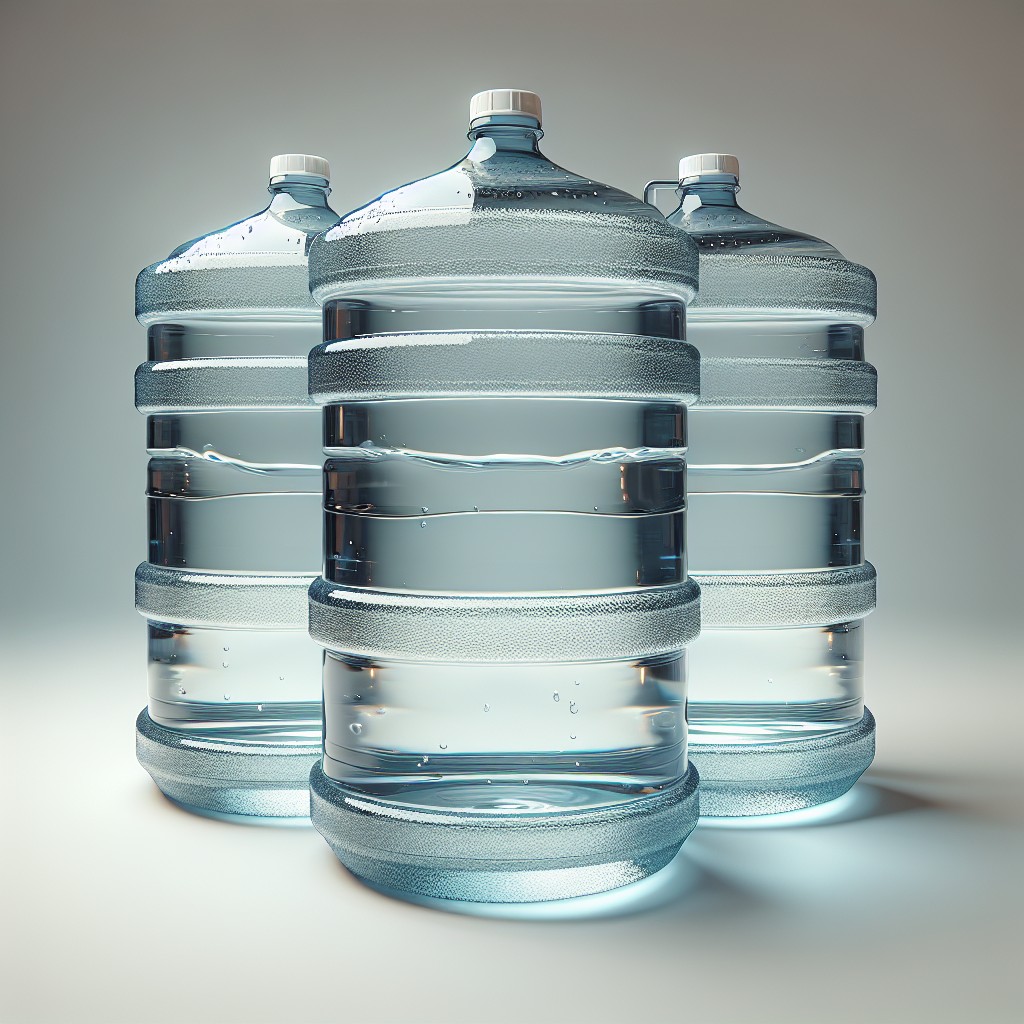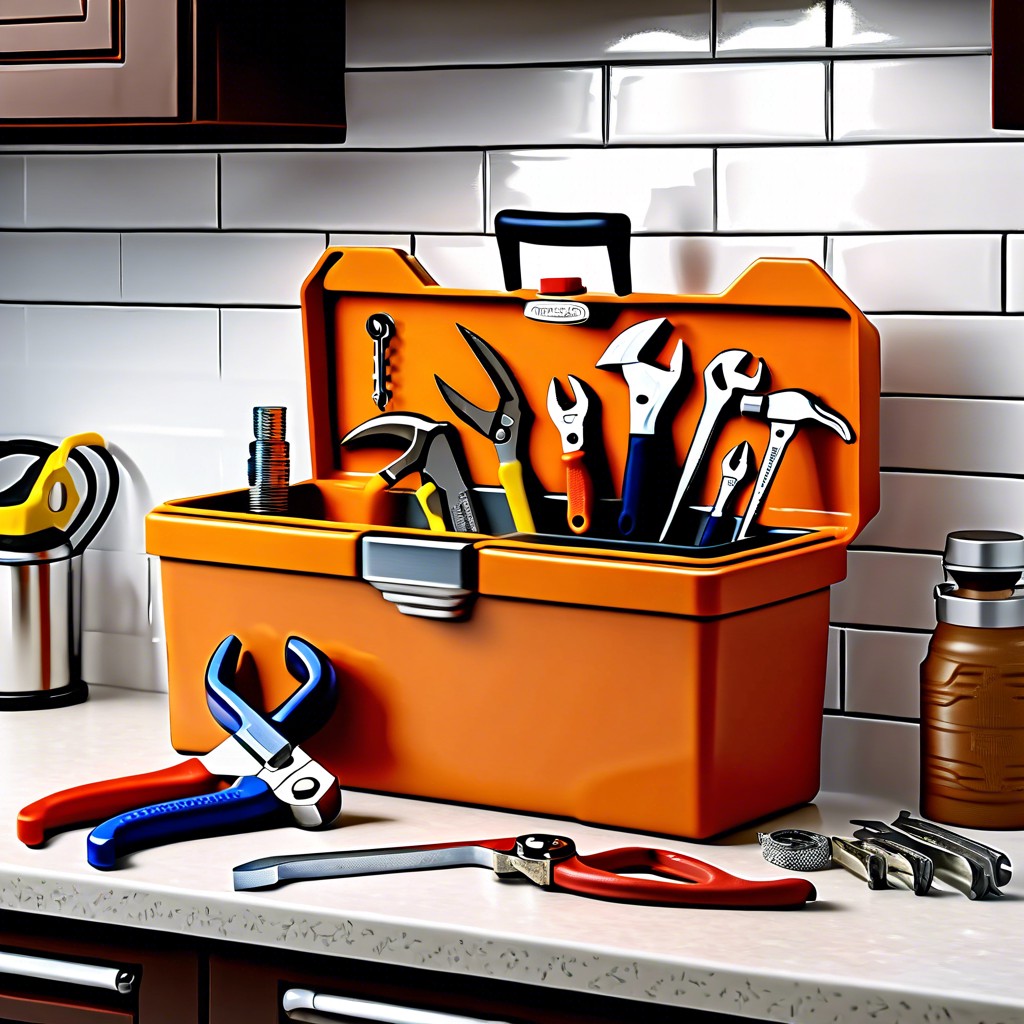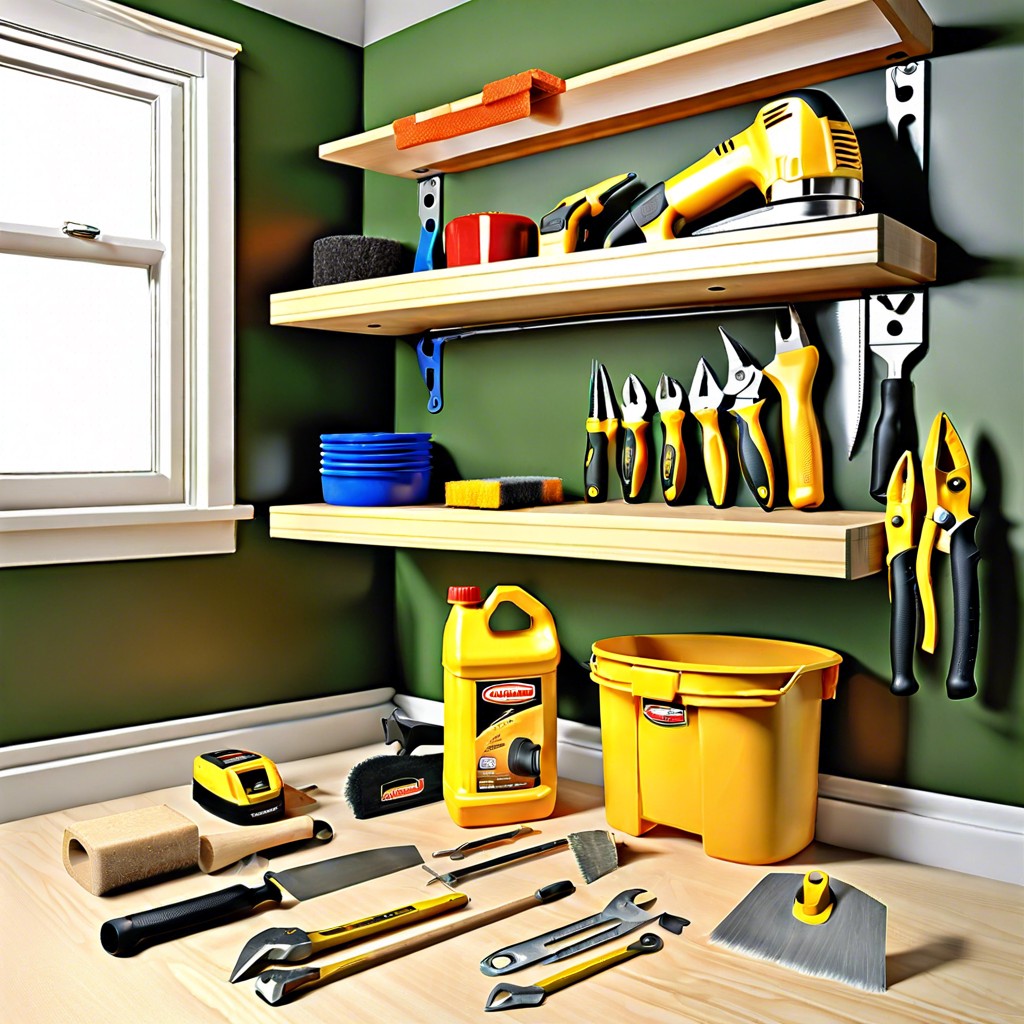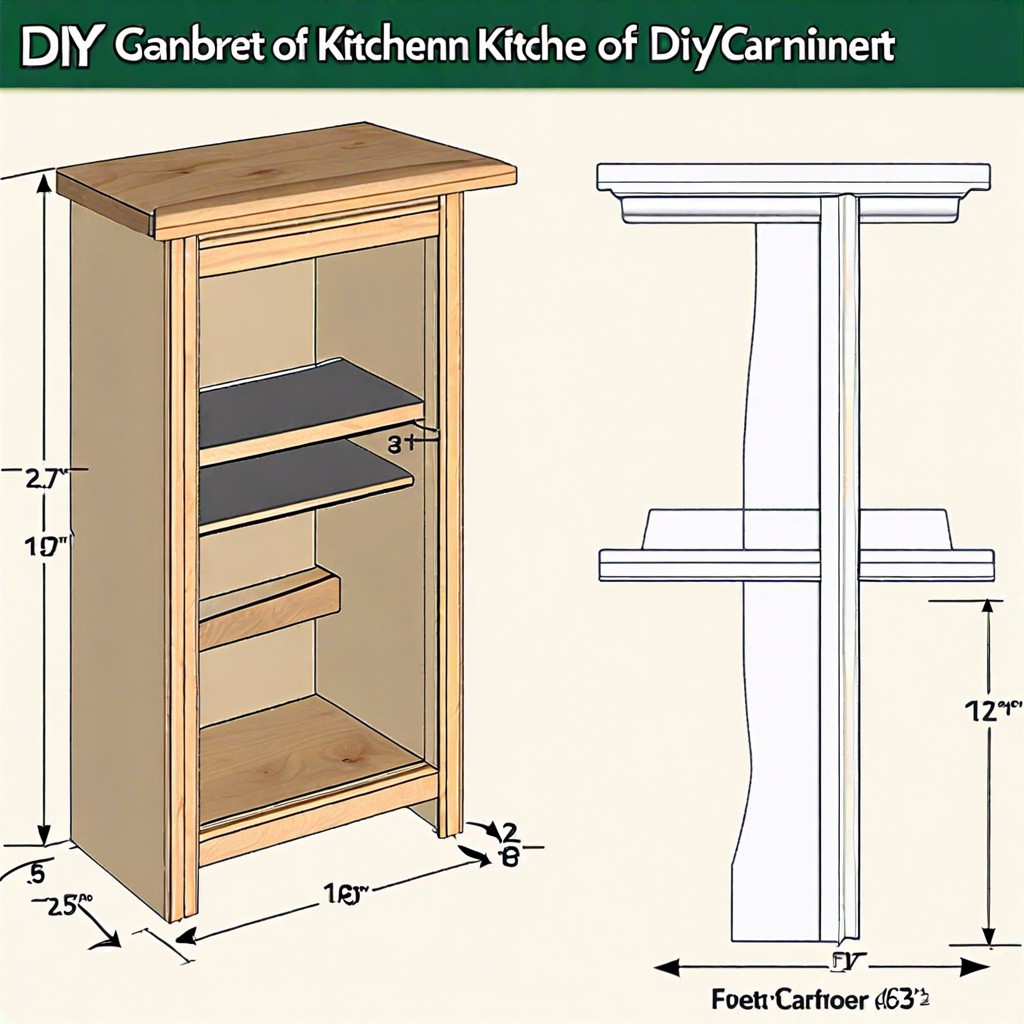Last updated on
Unraveling the size of 13 gallons might seem daunting, but it becomes straightforward when related to everyday objects or scenarios because visualizing our surroundings can significantly simplify understanding measurements.
Key takeaways:
- 13 gallons is equivalent to about 49 liters.
- Examples of 13-gallon containers include kitchen trash bags and coolers.
- A 13-gallon trash can is suitable for most families.
- Consider the available space and waste production when choosing a trash can size.
- 13-gallon trash cans are versatile and commonly used in kitchens.
What's Inside
Visualizing 13 Gallons in Everyday Objects

To get a solid grasp of the size of 13 gallons, think about everyday items you often encounter. Picture the standard kitchen trash bags hanging off the lip of a bin – these typically hold 13 gallons. Imagine filling just over two standard 6-gallon jerry cans used for fuel storage. Alternatively, consider the capacity of 104 standard 16-ounce water bottles, all of which combined equal roughly 13 gallons. These visualizations can help create a more concrete understanding of the volume we’re discussing.
The Volume of 13 Gallons in Liters
Switching between gallons and liters requires understanding the basic conversion rate: one gallon equates to approximately 3.785 liters.
By applying this rate, 13 gallons can be easily converted into liters. This results in a value close to 49.205 liters. When rounding for simplicity, it’s common to consider 13 gallons as approximately 49 liters or, even more straightforward, nearly half a hectoliter.
This transition from gallons to liters can be handy when encountering products or situations outside the U.S. system of measurement, as the metric system, which includes liters, is the standard in much of the world.
Whether you’re filling up an aquarium, comparing fuel efficiency in different countries, or calculating the volume of liquid for a recipe, understanding this conversion becomes practical.
Being able to visualize and convert 13 gallons into liters can not only help clarify measurements but also ease international communication regarding volume.
Examples of 13-Gallon Containers
Picture a standard kitchen trash bag, the type often touted for its ability to handle a family’s day-to-day waste; that’s the quintessential example of a 13-gallon container. It’s sizable enough to manage the detritus from meal prep, daily chores, and routine paper waste without constant trips to the outdoor bin.
Outdoor activities frequently employ 13-gallon containers as well. Envision a cooler packed with ice, drinks, and snacks for a picnic or a tailgate party. That’s often the capacity you’re working with—ample space for refreshments to keep a small group hydrated and happy.
In the gardening world, a 13-gallon pot represents a solid medium-sized option for growers. It suits tomato plants, small shrubs, or an assortment of herbs, providing enough soil volume for healthy root growth and plant development.
Finally, for those keen on homebrewing, fermenters often come in this size. A 13-gallon fermenter can produce a substantial batch of beer, enough to enjoy and share with friends. These examples help paint a clearer picture of how a volume of 13 gallons materializes in various aspects of daily life.
Comparing Trash Can Sizes: From Small Bins to Large Carts
Understanding the diverse range of trash cans available can help you choose the right size for your needs. Small bins, often ranging from 1 to 4 gallons, are compact enough for bathroom waste or limited desk clutter. They tuck away easily but require frequent emptying.
Moving up the scale, medium-sized cans, about 7 to 10 gallons, serve well for smaller households or as a recycling bin in a home office. These offer a balance between capacity and footprint, ensuring you’re not taking the trash out too often without sacrificing space.
At 13 gallons, cans hit the sweet spot for most families. They’re suited for kitchen use where the bulk of household waste is generated. This size is practical for a week’s worth of trash for an average family and fits common 13-gallon drawstring bags.
Larger carts, designed for outdoor use or large families, can range from 20 to 96 gallons. These are the workplace warriors and curb-side giants, able to handle heavy-duty waste generation, from yard debris to communal spaces in office settings. Matching your space and waste production to can size can optimize both cleanliness and efficiency.
How 13 Gallons Measures Up in Kitchen Trash Cans
Choosing the right kitchen trash can is essential for practicality and aesthetics. A 13-gallon model, which holds about 49 liters of waste, is considered a standard size for average family kitchens.
This size strikes a balance between frequent trash take-out trips and not allowing waste to sit for too long, which can cause odors. It typically fits standard 13-gallon trash bags, which are readily available at most stores.
The footprint of such a can—roughly 11 to 13 inches wide and about 23 to 25 inches tall—allows for a snug fit in spaces under the sink or alongside kitchen cabinets. The proportion ensures it’s large enough for a day’s worth of trash but not so big it overwhelms the kitchen space.
Given its versatility, it’s also a common benchmark when manufacturers design kitchen trash receptacles, with features like foot pedals, swing tops, or motion sensors for ease of use and to keep the kitchen hygienic.
Consider the layout of your kitchen and your household’s waste production when selecting a 13-gallon trash can. Opt for designs with lids to contain smells and with durable construction to withstand the rigors of kitchen use.
Appropriate Uses for 13-Gallon Trash Cans
When selecting the right trash can for your needs, a 13-gallon size is versatile. Many kitchen trash bags are designed to fit this volume, making it a convenient choice for household kitchen waste. It’s also ideal for larger family gatherings or parties where you expect the trash to accumulate quickly, ensuring enough space to accommodate all the waste without the need for constant emptying.
In a professional setting, these cans serve well in break rooms or common areas where employees discard lunch waste and coffee cups. If your recycling program includes a single-stream approach, the 13-gallon can is typically sufficient for daily recyclables in a small office.
Remember, though, if you’re using a 13-gallon can for recyclables, it’s best to have a separate container for paper and cardboard to keep materials sorted, unless your community supports mixed-material recycling. In gardening, a can of this size can be repurposed for storing soil, compost, or yard waste during seasonal clean-ups, proving its multifunctional appeal.
The Importance of Fitting the Trash Can to the Space Available
Maximizing efficiency in your living or working space is key, and selecting the right size trash can is part of that process. A 13-gallon trash can, while perfect for families or shared spaces, may seem too bulky in a cozy apartment or a compact office. To ensure a harmonious environment:
- Measure the area where your trash can will reside to confirm a 13-gallon bin will fit without impeding movement or access.
- Consider the clearance needed for when the can’s lid opens; there should be no obstructions above or around it.
- Keep in mind the ease of removal when the bin is full; there should be adequate room to lift out the bag without spillage.
- Account for aesthetic integration; the can should complement the space, not dominate it.
- Remember that a trash can placed in a high-traffic area requires regular maintenance to avoid becoming an eyesore or obstruction.
By giving thought to spatial harmony, you ensure that the necessary function of waste disposal doesn’t become a disruptive element in your well-organized space.
Trash Production: Suitability of 13 Gallons for Different Households
Size matters when it comes to managing waste in your home. Here’s why a 13-gallon trash can might be just the right fit:
- Single Occupants or Couples: If you’re living solo or with a partner, you’re likely generating less waste. A 13-gallon can is spacious enough to prevent frequent trips to the dumpster while not being so large that waste sits and potentially develop odors.
- Small Families: For families with a few members, this size strikes a balance. It can accommodate the day-to-day waste without the need for constant emptying, making it efficient for a moderately busy household.
- Limited Space: In apartments or smaller homes where every inch counts, a compact 13-gallon container fits neatly under the sink or in a pantry, conserving precious floor space while providing ample waste storage.
- Type of Waste: If your household recycles diligently, much of your refuse may divert to recycling bins, meaning your non-recyclable trash output will be less. A 13-gallon bag handles this reduced flow elegantly.
Consider your household’s specific needs and waste production pattern when selecting the size of your trash can. The aim is to find that sweet spot where functional meets practical without compromising on your living space or hygiene.
Matching a 13-Gallon Can With Your Household’s Needs
Before investing in a 13-gallon trash can, consider the size of your household and the amount of waste typically produced.
A 13-gallon can is ideal for families of up to 4-6 members with an average waste output.
For smaller households or those who recycle extensively, this size may prove too large, leading to less frequent disposal and potential odor issues.
For those with limited space, a 13-gallon can might be bulky, making more compact solutions appealing.
However, if space allows, the 13-gallon size is versatile, fitting neatly into kitchen cabinets or alongside appliances without dominating the room.
Evaluate your trash bag preferences as well; using the correct bag size ensures a snug fit and prevents spills.
The 13-gallon capacity is a standard size, making compatible bags readily available.
Lastly, factor in your household’s lifestyle.
If you entertain often or cook extensively, a can of this size can accommodate the increased waste without constantly needing to be emptied, ensuring a clean and welcoming environment for guests.
Placement Strategies for 13-Gallon Cans in the Home Office or Bathroom
For optimal use of space and functionality, it’s important to consider the following when positioning a 13-gallon can in a home office or bathroom:
1. Traffic Flow: Position the can in an area that doesn’t obstruct movement but is easily accessible for daily use.
2. Proximity to Desk or Vanity: Keep the can close enough to toss paper waste or bathroom trash without needing to walk across the room.
3. Aesthetic Integration: Select a can that complements the room’s decor and tuck it beside furniture to maintain a clean look.
4. Potential Splashes or Spills: In bathrooms, ensure the can is not directly under a potential splash zone from the sink or shower to prevent needing frequent cleaning.
5. Hiding from View: If preferred, place the can under a desk or in an inconspicuous spot like under the sink cupboard — provided it remains accessible for usage and removal.
6. Lid vs. No Lid: Decide if a lidded can is necessary for odor control and aesthetic purposes, especially relevant in smaller spaces such as bathrooms.
Remember, the goal is convenience merged with unobtrusiveness, ensuring the trash can serves its purpose without becoming a focal point in the room.
FAQ
What are the dimensions of a 13 gallon bag?
The dimensions of a 13 gallon bag are 24 inches in width and 31 inches in height.
What size is a normal kitchen garbage can?
The standard size of a kitchen garbage can is typically between 12 to 16 gallons, with 13 gallons being the most common choice.
How many cans fit in a garbage bag?
The number of cans that can fit into a large garbage bag ranges broadly from 300 to 400, with a potential for more if the cans are crushed down, with the exact number depending on can type.
How much weight can a 13-gallon bag hold approximately?
A 13-gallon bag can approximately hold up to 13 pounds (5.9 kg) of weight.
What is the volume in cubic inches of a standard 13-gallon kitchen trash can?
The volume of a standard 13-gallon kitchen trash can is 2,808 cubic inches.
Can a 13-gallon bag comfortably accommodate a week’s household waste?
Whether a 13-gallon bag can accommodate a week’s household waste largely depends on the size of the household, the types of waste generated, and the waste management practices in place.




